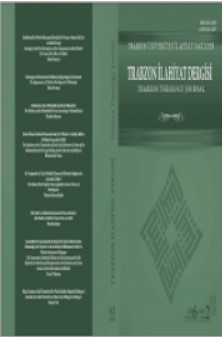Kierkegaard Felsefesinde Hakikatin (Doğruluğun) Görünümü
The Appearance of Truth in Kierkegaard’s Philosophy
Author(s): Nihat DurmazSubject(s): Christian Theology and Religion, 19th Century Philosophy, Philosophy of Religion, 19th Century
Published by: Karadeniz Teknik Üniversites - İlahiyat Fakültesi
Keywords: The History of Philosophy; Kierkegaard; Truth; Christianity; Existence; Paradox;
Summary/Abstract: Kierkegaard, who lived in the nineteenth century, solved the problem of truth in a way different from traditional thought. He emphasized in his works that any person should turn to an invented truth rather than a discovered truth. Unlike some existentialist philosophers, Kierkegaard tried to build existentialism by adhering to a religious understanding in the history of philosophy. Kierkegaard, who tries to explain Christianity's belief in both the trinity and the incarnation with a different interpretation from traditional approaches, seems to leave the Platonic thought and open the door to existential thought. This new conception is based on proving that existence comes before essence, unlike Platonist thinking that assumes that essence comes before existence. It is obvious that such a change will cause epistemologically important problems. Aware of these problems, Kierkegaard tried to resolve the dilemmas that arose. This study will focus on how Kierkegaard tries to justify the truth from an epistemological perspective. As a matter of fact, the philosopher emphasized a truth that was built by man rather than an obvious truth. It should also be noted that such an understanding of truth is decisive in the rationalization of the paradox resulting from the unification of God with the human body.
Journal: Trabzon İlahiyat Dergisi
- Issue Year: 6/2019
- Issue No: 2
- Page Range: 54-74
- Page Count: 21
- Language: Turkish

